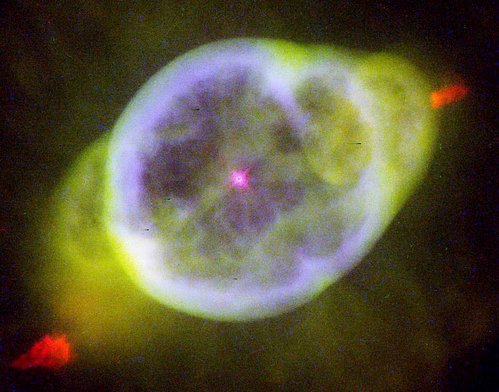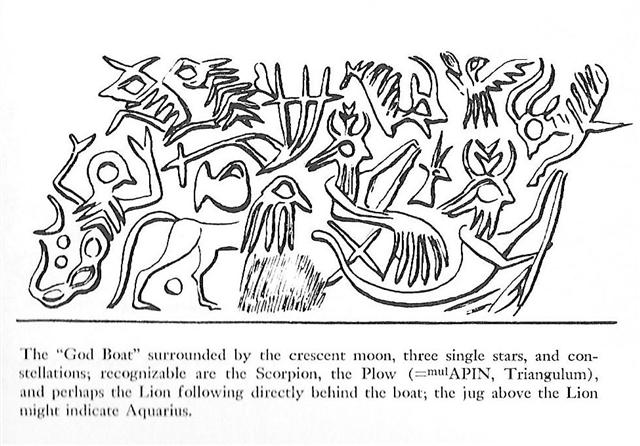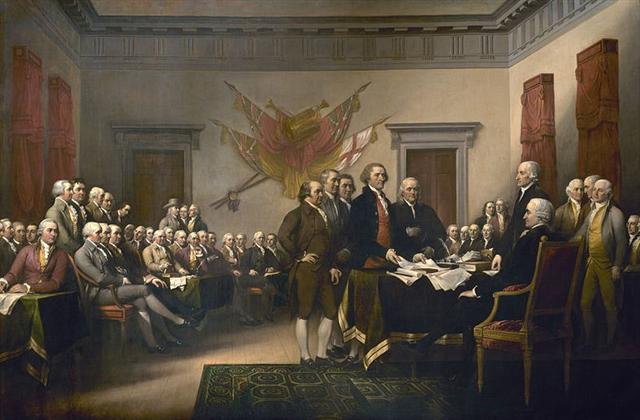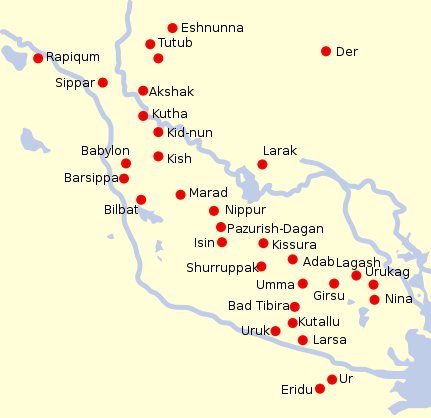The Explorers stayed for 5
days in Papa O Pea. In Hora
Iti 20 they went to Papa O Pea
from
Oromanga.
|
"July 11 (192) |
6 |
"July 18 (199) |
4 |
"July 23 (204) |
"July 24 (205) |
25 |
"Aug 19 (231) |
"Aug 20
(232) |
4 |
|
Te Anakena 11 |
Te Anakena 18 |
Te Anakena 23 |
Te Anakena 24 |
Hora Iti 19 |
Hora Iti 20 |
|
Hanga Takaure |
Hanga Hoonu |
Rangi Meamea |
Oromanga |
Papa O Pea |
|
7 days |
5 days |
1 day |
27 days |
5 days |
|
45 days |
The odd number of days they stayed and
rested in Hanga Takaure and in
Hanga Hoonu made it possible to find
a central day, viz. "July 14 (195 = 13 *
15) respectively "July 21 (202).
To repeat:
|
CLOSE TO THE
SUN: |
|
JUNE 17 (168 = 2 * 84) |
18 |
19 |
 |
 |
 |
|
Ga4-5 (88) |
Ga4-6 |
Ga4-7 |
|
Al Jabhah-8 (Forehead) /
Maghā-10 (Bountiful) /
Sharru-14 (King)
10h (152.2)
AL JABHAH = η Leonis
(152.4),
REGULUS
(Little KIng) =
α
Leonis
(152.7)
*111.0 = *152.4 - *41.4 |
λ Hydrae (153.2) |
ADHAFERA = ζ Leonis,
TANIA BOREALIS
(Northern Gazelle) = λ Ursae
Majoris,
SIMIRAM = ω Carinae
(154.7) |
|
Aug 20 (*152) |
21 |
22 |
|
°Aug 16 (*148) |
17 |
18 |
|
'July 24 (*125) |
25 |
26 |
|
→ Te Anakena 10 |
"July 11 (192) |
12 |
|
DAY 152 |
153 |
154 |
 |
|
JUNE 20 (*91) |
SOLSTICE (172) |
22 |
23 |
 |
 |
 |
 |
|
Ga4-8 |
Ga4-9 (92) |
Ga4-10 |
Ga4-11 |
|
ALGIEBA (The Mane) = γ
Leonis,
q Carinae (155.5) |
TANIA AUSTRALIS
(Southern Gazelle) =
μ
Ursae Majoris
(156.0),
GHOST OF JUPITER =
NGC3242 Hydrae
(156.8) |
Extended Net-26b (Ox)
μ Hydrae
(157.1) |
Maru-sha-arkat-Sharru-15
(4th Son behind the
King)
SHIR (Possessing
Luminous Rays) =
ρ
Leonis
(158.9) |
 |
|
Aug 23 |
24 (4 * 59) |
25 (*157 = 314 / 2) |
26 |
|
°Aug 19 |
20 (232) |
21 (*153) |
22 |
|
'July 27 (*128) |
28 |
29 (210 = 7 * 30) |
30 |
|
"July 13 (*114) |
14 (195 = 13 * 15) |
15 |
16 |
|
DAY 155 |
156 = 3 * 52 |
157 |
158 |
|
NAKSHATRA DATES: |
|
DEC 20 (354) |
SOLSTICE (*275) |
22 |
23 |
|
Al Sa'ad al Ahbiyah-23
(Lucky Star of Hidden
Things) /
Shatabisha-25
(Comprising a Hundred
Physicians)
ε
Oct. (338.1),
ρ
Aquarii (338.2), 2/365
Lac. (338.5),
SADACHBIA
=
γ
Aquarii
(338.6),
π
Gruis (338.9) |
β/172
Lac. (339.2), 4/1100
Lac. (339.4),
π
Aquarii (339.5)
*298.0= *339.4 - *41.4
CASTOR (α Gemini) |
δ
Tucanae (340.1),
ρ
Cephei (340.2),
ν
Gruis (340.3),
ζ
Aquarii,
δ
Gruis (340.4), 5/1100
Lac.
(340.7), σ Aquarii,
6/650 Lac. (340.9)
*299.0 = *340.4 - *41.4
PROCYON (α Canis
Minoris) |
υ Oct. (341.0), α/91
Lac. (341.1),
HOMAN (Hero) = ζ Pegasi,
β Piscis Austrini
(341.2), ν Tucanae
(341.5), υ Aquarii
(341.9) |
|
Febr 22 (53) |
TERMINALIA |
24 (365 + 55 = 7 * 60) |
25 |
|
°Febr 18 |
19 (50) |
20 (*336 = 4 * 84) |
21 |
|
'Jan 26 |
27 (392) |
28 |
29 (*314) |
|
"Jan 12 |
13 (378 → Saturn) |
14 |
15 (*300) |
 |
And in the C text:
|
ihe tamaiti |
kotia - te hokohuki |
kava haati |
kiore |
te hokohuki |
kua tu te rau hei |
te moko - te hokohuki |
|
Tia. (Tiha
G) .To sew. T Mgv.: tia,
to prick, to pierce, to
stick in. Churchill. Ta.:
tia, the lower belly.
Mq.: tia-kopu, pubes.
Ma.: tia, the lower
abdomen. Tiahonu, to
piece together. Mq.:
tuhonu, to mend, to
patch. Ma.: tuhonu,
to join. Churchill. Mq.:
tiaha, drinking cup.
Ha.: kiaha, a cup, a
mug. Tikao, to dig
out, to disembowel. Ma.:
tikaro, to dig out of a
hole. Churchill. KIA.
s. Haw., pillar or
inner post of a house
supporting the roof, any
kind of pillar or post, a
mast of a vessel; kia-aina,
a supporter of the land, a
governor of a province.
Marqu., tia, id.
Sam., ti'a, the stick
used in tanga-tia, a
man's head (abusively);
tia-pula, taro-tops cut
off for planting. Sunda,
tihang. Mal., tiang,
a pillar. Greek, κιων,
a pillar, support of the
roof, the identical sense of
the Polynesian usage of the
word. Liddell and Scott give
no etymology or connections
of κιων.
(Fornander) |
 |
 |
 |
 |
 |
 |
 |
|
Cb6-5 (146 + 366) |
Cb6-6 (11 * 11) |
Cb6-7 (392 + 122) |
Cb6-8 |
Cb6-9 |
Cb6-10 |
Cb6-11 |
|
CLOSE TO THE FULL MOON: |
|
Rishu A.-13 (Head of the
Lion)
ψ Leonis (146.4),
RAS ELASET AUSTRALIS = ε
Leonis
(146.6)
*105.0 = *146.4 - *41.4 |
VATHORZ PRIOR =
υ
Carinae
(147.9) |
υ¹
Hydrae (148.4),
RAS ELASET BOREALIS
(Northern Head of the Lion)
=
μ
Leonis
(148.7)
*107.0 = *148.4 - *41.4 |
TSEEN KE (Heaven's Record) =
φ
Velorum
(149.9) |
ν Leonis (150.1), π Leonis
(150.6) |
υ² Hydrae (151.8) |
Al Jabhah-8 (Forehead) /
Maghā-10 (Bountiful) /
Sharru-14 (King)
10h (152.2)
AL JABHAH = η Leonis
(152.4),
REGULUS
(Little KIng) =
α
Leonis
(152.7)
*111.0 = *152.4 - *41.4 |
 |
|
Aug 14 |
15 (227) |
16 |
17 |
18 |
19 |
20 |
|
'July 18 |
19 (200) |
20 |
21 |
22 |
23 |
24 |
|
"July 4 |
TE ANAKENA 5 (186) |
6 |
7 |
8 |
9 |
TE ANAKENA 10 (191) |
|
HELIACAL STARS: |
|
Arkat sha hi-na Shahū-27
(Eastern One in the Tail of
the Goat)
ENIF (The Nose) =
ε
Pegasi, ERAKIS =
μ
Cephei
(329.2),
46 CAPRICORNI,
JIH (the Sun) =
κ
Pegasi
(329.3),
ι
Piscis Austrini (329.4),
λ
Capricorni (329.6),
ν
Cephei (329.7),
DENEB ALGIEDI
=
δ
Capricorni
(329.8)
*288.0 = *329.4 - *41.4 |
θ
Piscis Austrini (330.1),
λ
Oct.
(330.7) |
KUH (Weeping) =
μ
Capricorni
(331.4),
γ
Gruis (331.5)
*290.0 = *331.4 - *41.4 |
no star listed (332) |
η Piscis Austrini (333.4)
*292.0 = *333.4 - *41.4 |
22h (334.8)
KAE UH (Roof) = ο Aquarii
(334.0),
AL KURHAH (White Spot) = ξ
Cephei
(334.4),
SADALMELIK
(Lucky King) = α Aquarii,
AL DHANAB (The Tail) = λ
Gruis
(334.6), ι Aquarii, ν Pegasi
(334.7)
*293.0 = *334.4 - *41.4 |
ι Pegasi (335.0),
ALNAIR (The Bright One) = α
Gruis
(335.1), μ Piscis Austrini,
υ Piscis Austrini (335.3),
WOO (Pestle) = π Pegasi
(335.7),
BAHAM = θ Pegasi,
τ Piscis Austrini (335.8) |
|
July 4 is
the 185th day of the year
(186th in leap years) in the
Gregorian calendar. There
are 180 days remaining until
the end of the year. The
Aphelion, the point in the
year when the Earth is
farthest from the Sun,
occurs around this date ...
1776 (= 4
* 444) A.D. was a leap year
and therefore July 4 was not
day 185 but day 186.


... Ira grew
angry and quarreled [he
kakai] with Makoi. He
said the following (to him):
'You did not pay attention,
last-born, and you did not [tae]
give the (full) name. This
is how it should be [Penei]:
the Manavai of Hau Maka of
Hiva, in memory (mo
aringa ora) of
the father, of his dream
soul'. Makoi replied, 'In
Hiva the land belongs to him
- the land here is mine, not
his [tae oona]!'
(E:21) |
|
tu te rau hei |
ku hakahonui raua |
kiore |
hokohuki |
te rau hei |
te moko e te hokohuki |
 |
 |
 |
 |
 |
 |
 |
|
Cb6-12 |
Cb6-13 (520) |
Cb6-14 |
Cb6-15 (130) |
Cb6-16 |
Cb6-17 |
Cb6-18 |
|
CLOSE TO THE FULL MOON: |
|
"July 11 (192) |
12 |
13 |
(195 = 13 * 15) |
15 |
16 |
17 |
 |
|
HANGA TAKAURE |
|
kua tupu te mea ke |
kotîa
hia |
te kava tu |
|
Tia.
(Tiha G) .To sew. T
Mgv.: tia, to prick,
to pierce, to stick in.
Churchill. Ta.: tia,
the lower belly. Mq.:
tia-kopu, pubes. Ma.:
tia, the lower abdomen.
Tiahonu, to piece
together. Mq.: tuhonu,
to mend, to patch. Ma.:
tuhonu, to join.
Churchill. Mq.: tiaha,
drinking cup. Ha.: kiaha,
a cup, a mug. Tikao,
to dig out, to disembowel.
Ma.: tikaro, to dig
out of a hole. Churchill.
KIA. s. Haw.,
pillar or inner post of a
house supporting the roof,
any kind of pillar or post,
a mast of a vessel;
kia-aina, a supporter of the
land, a governor of a
province. Marqu., tia,
id. Sam., ti'a, the
stick used in tanga-tia,
a man's head (abusively);
tia-pula, taro-tops cut
off for planting. Sunda,
tihang. Mal., tiang,
a pillar. Greek,
κιων,
a pillar, support of the
roof, the identical sense of
the Polynesian usage of the
word. Liddell and Scott give
no etymology or connections
of
κιων.
(Fornander) |
 |
 |
 |
 |
 |
|
Cb6-19 |
Cb6-20 |
Cb6-21 (136) |
(365 + 137 = 529) |
Cb6-23 → 6 * 23 = 186 |
|
CLOSE TO THE FULL MOON: |
|
"July 18 |
19 (200) |
20 |
21 |
22 / 7 → π |
|
φ Hydrae (160.3) |
no star listed (161) |
VATHORZ POSTERIOR = θ
Carinae
(162.1),
PEREGRINI = μ Velorum,
η Carinae
(162.6) |
ν Hydrae (163.1) |
no star listed (164)
ALTAIR (α Aquilae)
|
|
... This
[η
Carinae] is one of the most
noted objects in the
heavens, perhaps even so in
almost prehistoric times,
for Babylonian inscriptions
seem to refer to a star
noticeable from occasional
faintness in its light, that
Jensen thinks was η.
And he claims it as one of
the temple stars associated
with Ea, or Ia, of Eridhu¹,
the Lord of Waters,
otherwise known as Oannes²,
the mysterious human fish
and greatest god of the
kingdom.
¹ Eridhu,
or Eri-duga, the Holy City,
Nunki, or Nunpe, one of the
oldest cities in the world,
even in ancient Babylonia,
was that kingdom's
flourishing port on the
Persian Gulf, but, by the
encroachment of the delta,
its site is now one hundred
miles inland. In its
vicinity the Babylonians
located their sacred Tree of
Life.
²
Berōssōs described Oannes as
the teacher of early man in
all knowledge; and in
mythology he was even the
creator of man and the
father of Tammuz and Ishtar,
themselves associated with
other stars and sky figures.
Jensen thinks Oannes
connected with the stars of
Capricorn; Lockyer finds his
counterpart in the god
Chnemu of Southern Egypt;
and some have regarded him
as the prototype of Noah
...
 |
|
HANGA HOONU |
|
kiore |
 |
|
Cb6-24 (392 + 139 = 531 = 18
* 29½) |
|
CLOSE TO THE FULL MOON: |
|
Wings-27 (Snake → stream of
water)
η
Octans (165.4),
ALKES
(Shallow Basin) =
α
Crateris
(165.6)
*124.0 = *165.4 - *41.4 |
|
Sept 2 (245 = 80 + 165) |
|
TE ANAKENA 23 (166 + 38) |
|
RANGI MEAMEA |
... In China, with Capricornus,
Pisces, and a part of Sagittarius,
it [Aquarius] constituted the early
Serpent, or Turtle, Tien Yuen;
and later was known as Hiuen Ying,
the Dark Warrior and Hero, or Darkly
Flourishing One, the Hiuen Wu,
or Hiuen Heaou, of the Han
dynasty, which Dupuis gave as
Hiven Mao. It was a symbol of
the emperor Tchoun Hin, in
whose reign was a great
deluge; but after the Jesuits came
in it became Paou Ping, the
Precious Vase. It contained three of
the sieu, and headed the list of
zodiac signs as the Rat,
which in the far East was the
ideograph for 'water', and still so
remains in the almanacs of Central
Asia, Cochin China, and Japan
...

Day 204 ("July 23) was 120 days
later than day 84 - the Julian date
for the northern spring equinox. And
"July 23 was 61 days before the
autumn equinox (265 = 84 + 181 = 181
+ 84). South of the equator, as on
Easter Island, this would therefore
have corresponded to day 61 before
day 84 = "January 23 (= 84 - 61).
The precessional distance down from
the time-frame of Bharani to that of
the Bull was *64 - *41 = *23 right
ascension days. I.e., at the time of
the Bull the heliacal date of Alkes
would have been JUNE 30 (181 = 204 -
23), and therefore at the time of
the Bull also Sirius would here have
risen together with the Sun.
|
JUNE 28 |
29 (180) |
30 (SIRIUS) |
 |
 |
 |
|
Ga4-16 |
Ga4-17 (100) |
Ga4-18 |
|
CLOSE TO THE SUN: |
|
ν Hydrae (163.1) |
no star listed (164)
ALTAIR (α Aquilae)
|
Wings-27 (Snake →
stream of water)
η
Octans (165.4),
ALKES
(Shallow Basin) = α
Crateris
(165.6)
*124.0 = *165.4 -
*41.4 |
 |
|
Aug 31 |
Sept 1 |
2 (7 * 35) |
|
"July 21 |
22 / 7 |
23 (204 = 165 + 16 +
23) |
|
DAY 163 |
164 |
165 (= 181 - 16 |
The empty vessel held up in front of the
Emperor of China was surely the Crater
constellation, and by aiming at Sirius
(up in his water pool) he intended to
bring sweet water down - as when in
Egypt the Nile was refilled by Sirius
when this greatest of stars returned to
visibility.
... The Sothic cycle
was based on what is referred to in
technical jargon as 'the periodic return
of the heliacal rising of Sirius', which
is the first appearance of this star
after a seasonal absence, rising at dawn
just ahead of the sun in the eastern
portion of the sky. In the case of
Sirius the interval between one such
rising and the next amounts to
exactly 365.25 days - a
mathematically harmonious figure,
uncomplicated by further decimal points,
which is just twelve minutes longer than
the duration of the solar year
...
... In ancient Egypt
they thought Sirius was behind the
yearly rise of the Nile ... the seasonal
cycle, throughout the ancient world, was
the foremost sign of rebirth following
death, and in Egypt the chronometer of
this cycle was the annual flooding of
the Nile ...
... Pliny wants to
assure us that 'the whole sea is
conscious of the rise of that star, as
is most clearly seen in the Dardanelles,
for sea-weed and fishes float on the
surface, and everything is turned up
from the bottom'. He also remarks that
at the rising of the Dog-Star the wine
in the cellars begins to stir up and
that the still waters move ...
... This means Sirius
'walked hand in hand' with the Sun when
he gradually preceded the equinoxes and
the solstices in relation to the basic
structure in the background.
At the time of
rongorongo Sirius rose heliacally in
June 30 and likewise, it could be
calculated, had Sirius risen with the
Sun in day 181 in the Golden Age of the
Bull, 64 precessional days earlier. In a
Sun calendar Sirius stood firm like a
pillar and on Easter Island one of the
names for this
star was Te Pou (column, pillar,
post) ...
The Explorers stayed for a week in Hanga
Takaure and for 5 days in Hanga Hoonu. 7
+ 5 = 12. Then they reached Rangi Meamea
in the following day. 168 (= 2 * 84 = 24
weeks) + 13 = 181 → Sirius together with
Alkes at the Full Moon according to the
time-frame of the Bull ...
We should now try to use the same method
- finding the central day - also for
Papa O Pea.
|

























